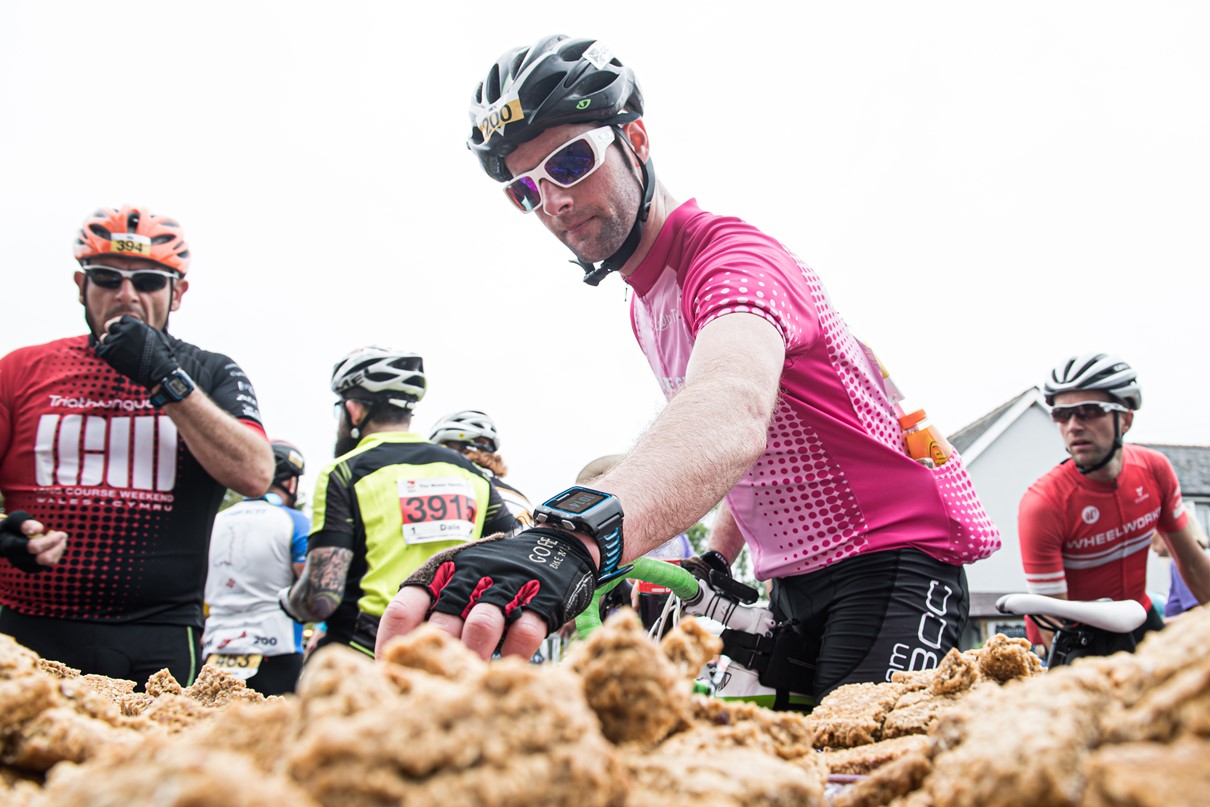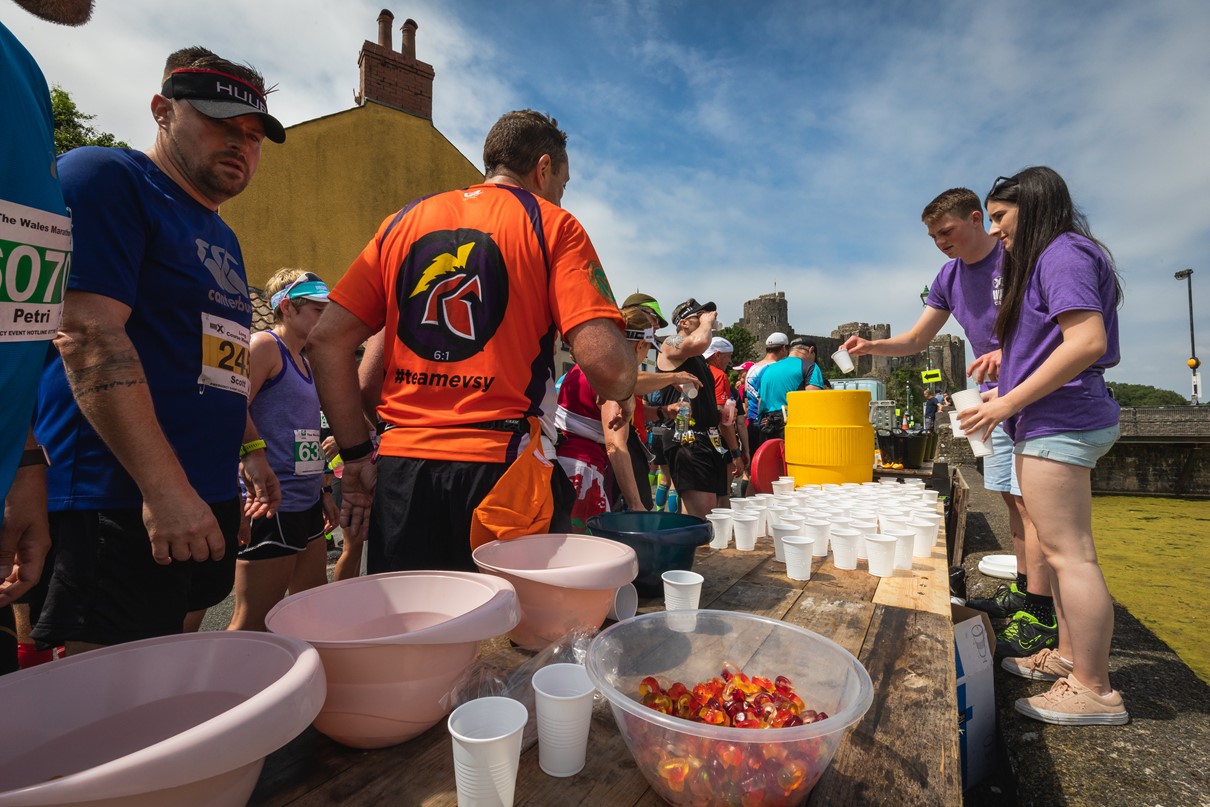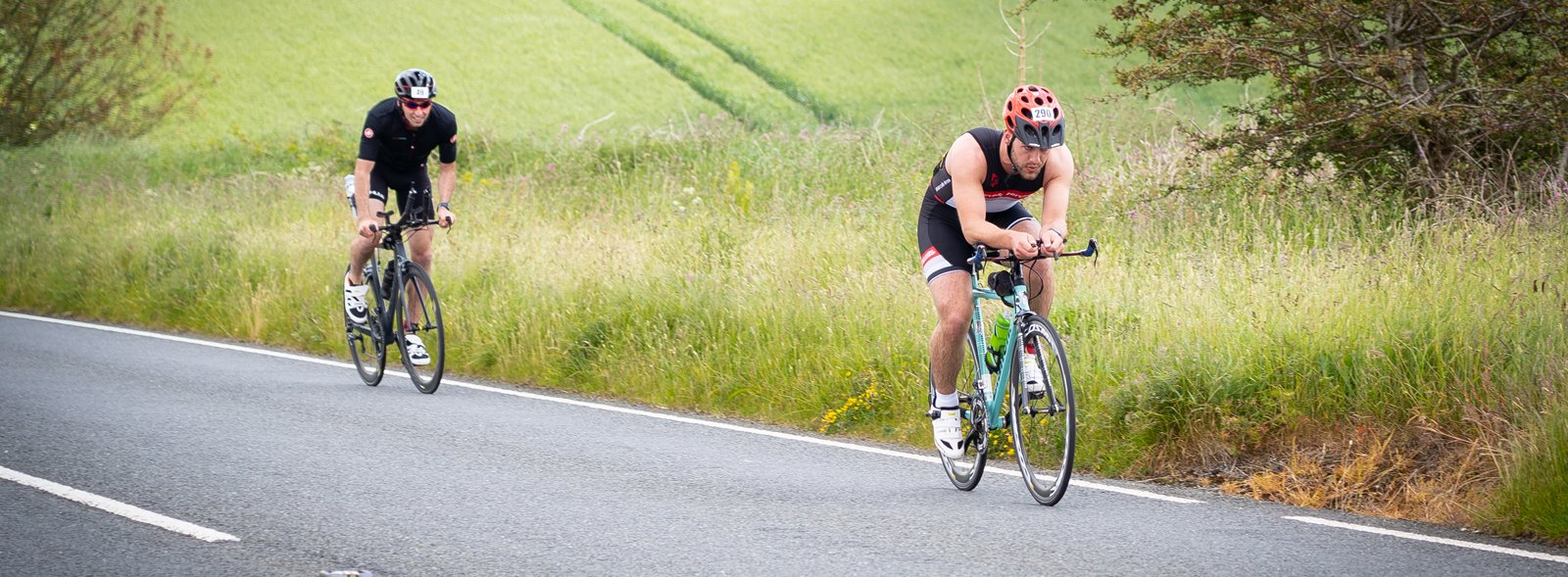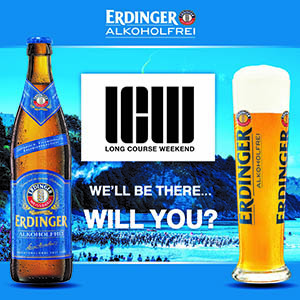How to fuel your day - self sufficiently
Top tips on how to fuel on race day for yourself
With COVID, race aid stations are going to look quite a lot different for at least this year and possibly going forward for a while. While this might be a pain for some people, this may actually work in your favour (if you are prepared!).
Many races now are likely only to have a water station on the bike/run elements of a long-distance race – where previously they may have had food like bananas or even energy bars and gels. While it’s a shame that this needs to be the case, obviously it reduces the amount of contact and opportunity for transmission of covid or any other bugs in the air.
Races like The Wales Triathlon are combatting this by having a special needs bag for the bike, where you can put any/everything you might want out on the course that you are not carrying with you in a bag, that will be taken out to a point on the bike course where you can pause to refill/refuel if needed.

Feed stations like this one won't be feasible during the Covid pandemic
Of course, you can choose not to make use of this facility – but it can prove especially useful with forward-thinking!
Hopefully, by now – you’ll have your plan set (at least roughly) for what you want to eat and drink over the event. That may be 2 bottles of your drink of choice, potentially 3 if you’re thirsty.
There may be particular snacks or gels that you prefer or sit better with you.
The great thing about the Special Needs bags for this and other events is that you can pack emergency extras to get you around that last 15-20 miles of your ride on the day if for some reason you’re extra hungry, or you drop stuff early on. Or even, if you only have room for one bottle on your bike (and why wouldn’t you have an extra cage), or you would rather not have loads of food on you/your bike you could pick up your extras en route and save carrying too much.
I’ve always thought that with longer races, it’s better to be prepared and have things that you don’t need – rather than be left needing stuff you now can’t have. So packing an extra bottle, a few gels or even your favourite bike snack is a great way to look after yourself and have that treat waiting for you if needed. You can also make sure that you have what’s specific to you – whether you have intolerances, or if you don’t get on with particular brands.

Me, I sweat heavily so I need a drink that has plenty of electrolyte in it.
Finally on the run, having a race belt that you can carry your fuel for the half marathon will be key. The Wales Triathlon will have water/energy drink stations on the way around, but you won’t have the usual coke/Jaffa cakes/bananas etc. The chances are you won’t necessarily eat lots on the run – but getting used to running with a belt or stuffing enough gels in your pockets to get around the run will be important if you know that that is what you need. Again, I’d err on the side of caution and stick a spare or two just in case.
You might look or think of this as an extra hassle. I’d say look at it as an opportunity; it’s a chance to make sure you have exactly what you need and want – and not worry about whether the race’s sponsor has stuff that you like.
Example food pre and during the race:-
Dinner the night before
There’s very little evidence to suggest that the classical “carb loading” does a huge amount for you – there’s only so much glycogen (energy) that your muscles and liver can store. As a result, a decent meal with a good level of carbohydrate will suffice to make sure that your stores are topped off.
Breakfast, race day
This will very much vary from person to person, and hopefully will be something that you have practised within your training. In an ideal world, you probably want something that is easy for your stomach to digest and that you know won’t cause you any discomfort during your race. This is why it’s key to practise race nutrition as well as pace/distance! My favourite is a smoothie with oats, honey and banana – enough to get energy into my system but not so heavy on the stomach that it sits there! It’s also a great way of making sure you have enough fluids in you.
Some people need to drink more in a day than others to be at optimum levels.
Immediately pre-race
Some people like to have a gel as they are heading to the start line. This shouldn’t be a necessity if you’ve eaten properly overnight/in the morning, but it may be something that gives a bit of confidence. Sipping a bit of water/electrolytes up to the start is more useful.
Post swim
You may want to make sure you eat something as you get out onto the bike course – but in T1, it’s a good idea to have a small bottle of water. Not necessarily to drink from, but to wash the saltwater from your mouth!
Bike
This is where things start getting serious! Most people can get a couple of drinks bottles on their bikes. Some may even have room for a 3rd – which you may or may not need. If you feel that you need an extra bit of drink, that bottle could be one of the things for your special needs bag. Similarly, food-wise, you may have a bento box on your top tube or gels/bananas in your pockets, but you can always put extra food or salt tablets etc in the special needs bag.
The theory is that you could be putting somewhere in the region of 90g of carbohydrate per hour into the body;
This could cause gut issues if you’ve never done it before, so make sure you practise! The good thing is that energy gels/bars/drinks have a lot of this cover – so as long as you’re having a few bites of something here, or few sips of a drink there regularly, you should be ok. Again, the key here is your preparation. Decide on what you like. Decide on what you can carry. Put the rest – plus contingency extras in your special needs bag.
Run
You’re on the home straight now. Hopefully not too long to go. Eating on the run can be more challenging than biking – the up and down motion and impact can impact your gut. Training to eat food is important. Some people may run with a hydration backpack – which gives you more space to carry food. Alternatively, you may stick with gels which are easier to carry in a race belt. Most gels are between 20-30g of carbohydrate, so that along with some sports drink every 30-45 mins should more than cover you as you get toward the finish line!
Throughout all this, there are a few keys to take away.
1) Practise with what you may use – don’t want to go in trying something new!
2) Pick things that you like the taste of, it will make it easier to have regularly through the event.
3) Plan things out so you can carry what you need and where you can pick up (water station/special needs) anything extra.









